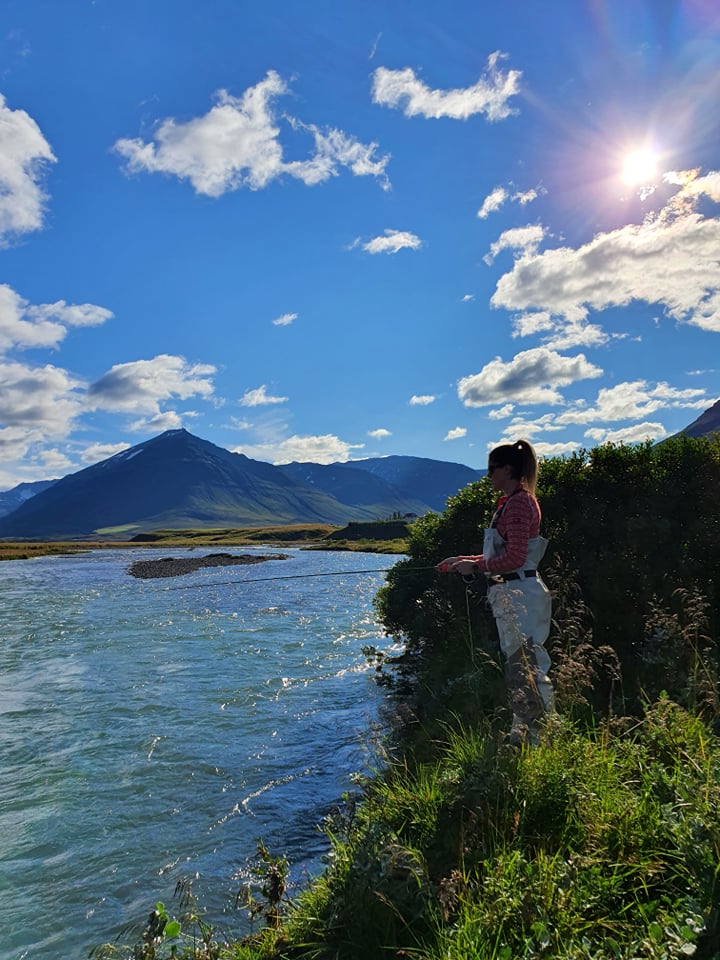Arctic char fishing is fascinating!
Among all the rivers in Eyjaförður that flow into the sea, Svarfaðardalsá is likely the most successful for Arctic char fishing. The river’s fishing area spans approximately 35 km, divided into 5 beats, each with two rods. The River Skíðadalsá is the main tributary and is a decent fishing river. While char is the predominant fish species, there are also numerous brown trout in the lower sections of the River Svarfaðardalsá. Typically, the fish start migrating in early June, with the peak period being late July and the first two weeks of August. Half-day permits are available and are reasonably priced. One main drawback of these rivers is that they often become muddy, particularly during heavy rain and warm weather.

One of the anglers who fishes regularly in Svarfaðardalsá is the owner of Veiðiheimar. He had this to say about the river:
“I have mostly fished in beats 3 and 5. Beat 3 is typically the most productive fishing spot in the river and is quite popular. However, it can get muddy in certain conditions. Therefore, it might be a better option to book beat 5 or even both beats during the same session. I prefer to walk the beat and fish as many fishing spots as possible. Beat 5 remains mostly unchanged over the years, except for its lower part. Area 3 tends to change significantly from year to year, so you may experience it differently each time. Most fishing spots tend to remain in the same locations, occasionally shifting slightly. While they may improve at times, unfortunately, they can also become unproductive. When conditions permit, nymphs are primarily used for fishing upstream. Occasionally, streamers are necessary, especially in muddy conditions, since char are attracted to bright colors such as red, pink, and orange. It is recommended to use rods that are 7-9 feet long with a line weight of 4-6. Use floating lines with tippet material 1x for streamers, and 2x or 3x for nymphs” Enjoy!
Image/Taken on the 25th of July 2025, at beat 5. One of 12 fish that were caught on that day, and was released.
Summary made by Högni H. at Veiðiheimar
Get to know Svarfaðardalsá
